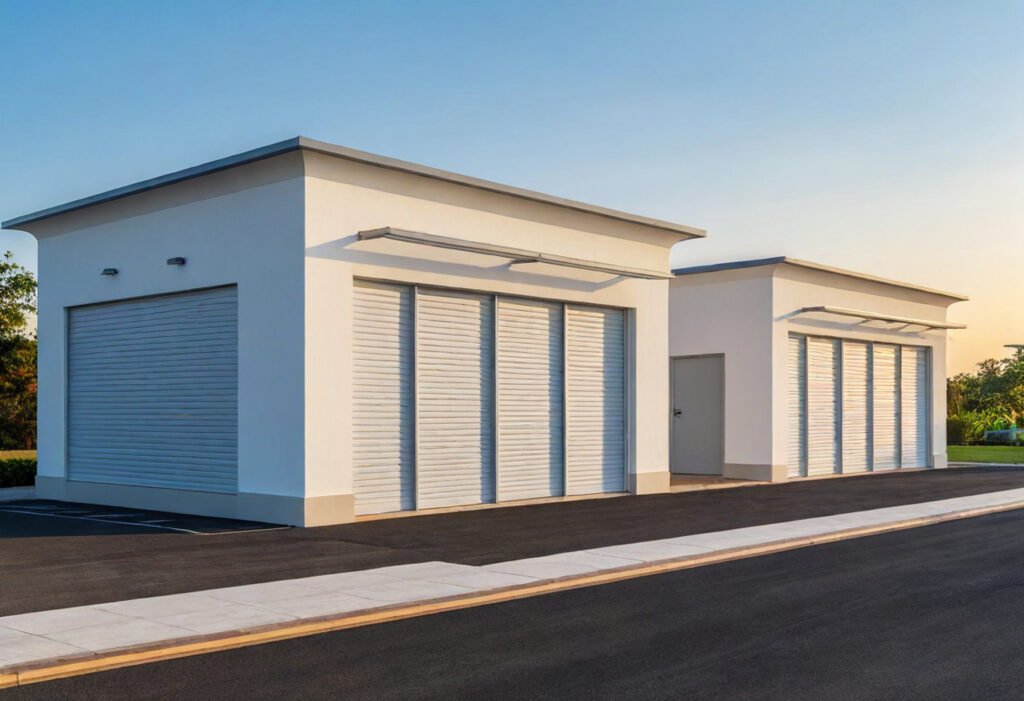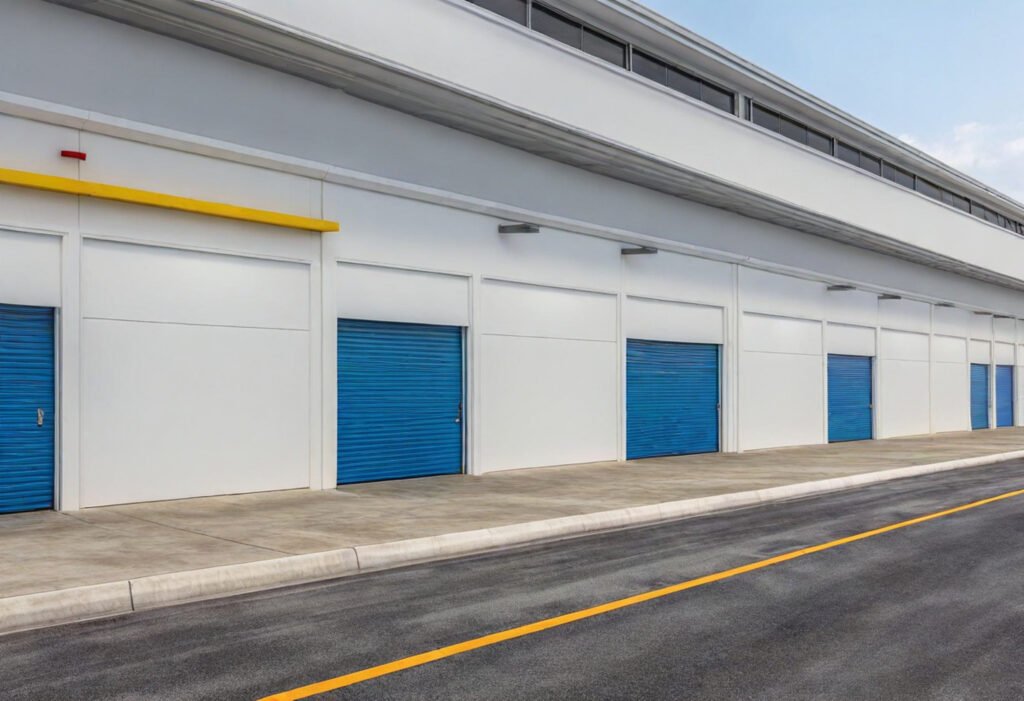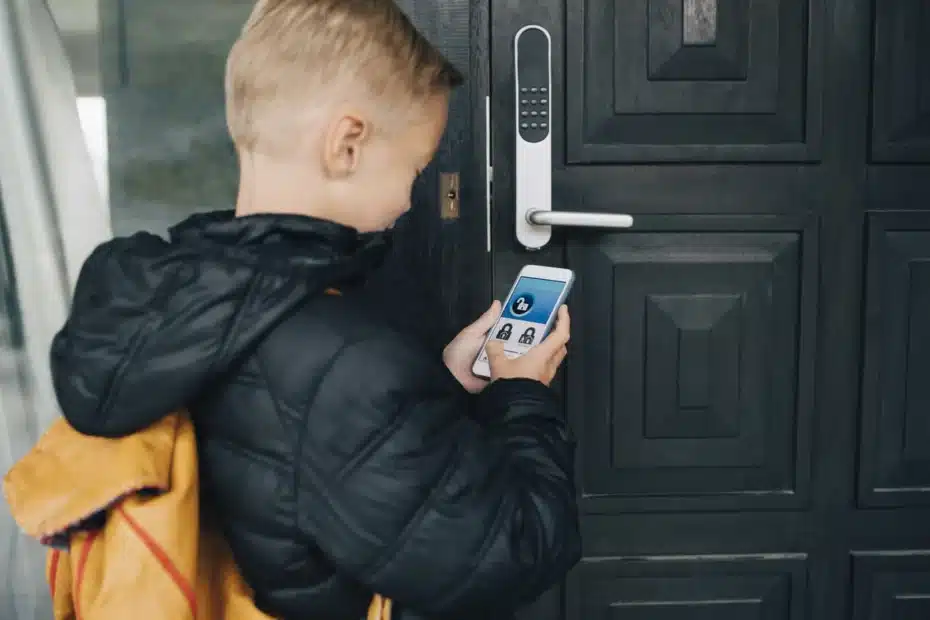Storage unit security makes local news headlines because thieves target these facilities worldwide. Many owners and renters question their valuables behind those metal doors.
The British Security Industry Association reports that 85% of its members use an access control system. This statistic shows how security measures have become crucial. The market offers numerous high-security storage unit options, but choosing the right protective features can be tricky. A detailed storage unit security system costs between $1,200 $2,800 for facilities needing four systems.
This piece breaks down security features that give you the best value, from smart locks to surveillance cameras. You’ll learn how physical barriers like high fencing keep intruders away. We’ll also help you decide if hiring security personnel makes financial sense for your facility.
Understanding the Basics of Storage Unit Security
Security isn’t just a feature for storage facilities—it serves as the lifeblood of the entire business. No storage facility can operate without robust security solutions since customers expect their possessions to stay safe from theft and vandalism.
Why security matters for storage facilities
Security does more than just protect. Physical security used to be just a necessity, but today’s sophisticated systems have become strategic assets that directly drive business success.
Strong security boosts occupancy rates by a lot. A well-secured facility draws security-conscious renters who gladly pay premium rates for peace of mind. Facilities with complete security features can charge higher rental rates and increase revenue per square foot.
Security builds customer trust—the lifeblood of long-term business growth. People often choose better-protected options when deciding between competing facilities. Good security measures help prevent damage that can get pricey. Construction material prices have hit record highs, and repair costs from break-ins can quickly reach tens of thousands of dollars.
Common threats: break-ins, vandalism, and internal theft
Break-ins pose the biggest threat to storage facilities. A California investigation found 56 break-ins across 38 storage facilities in just two years. Criminals target storage units because they hold high-value items. A Union County case showed this when a thief took more than $150,000 worth of valuables from multiple units.
These break-in methods happen most often:
- Lock cutting – Thieves use bolt cutters to remove padlocks in seconds and quickly access unit contents
- Wall penetration – Criminals rent legitimate units, then cut through walls to reach adjacent storage spaces
- Internal theft – Employees with unrestricted access steal valuables or tamper with security systems
Many tenants rarely check their units, so theft can go unnoticed for weeks or months. This gives criminals plenty of time to escape without quick detection.
How layout impacts your security needs
A facility’s design greatly affects how vulnerable it is to criminal activity. Multiple entrances and drive-up units make things convenient for customers, but create security gaps that criminals can exploit.
Smart layouts use strategic elements like good lighting throughout the property. This removes hiding spots and helps cameras see better. Poor lighting and limited camera coverage create blind spots where suspicious activity goes unnoticed.
Building design can work as a main security measure. Some facilities use pod storage systems in arrangements that make unauthorized access nearly impossible without special equipment. Camera placement, controlled gate access points, and perimeter fencing must work together to reduce weak spots.
Top 4 Add-Ons That Strengthen Your Storage Unit Security System

“Integrating video surveillance with other measures like motion sensors and access control systems enhances overall security. This allows immediate action when unauthorized activity is detected, improving response times and reducing the risk of theft or damage.” — ProdataKey Security Team, Industry-leading provider of cloud-based access control and security solutions
Modern technology has reshaped what storage unit security can achieve. The most effective security features create multiple protective layers that work together. These features help deter criminals and give owners peace of mind.
1. Smart locks and smart entry systems
Traditional padlocks are becoming outdated faster as smart entry systems reshape the scene of access control. Tenants can unlock their units directly from smartphones with Bluetooth-enabled locks. This eliminates the need for physical keys that someone might lose or steal. The data shows that 40% of businesses use mobile devices to control access.
These systems give users powerful features like digital key sharing. Tenants can give temporary unit access to friends or family members. The access can be revoked anytime. Smart locks keep detailed logs that show when people accessed the units. The system helps facility owners automate lock checks and overlocking processes. They can monitor everything remotely without visiting the site.
2. Cloud-based surveillance cameras
Thieves can steal or damage traditional surveillance footage stored on-site. Cloud-based systems solve this issue by sending encrypted video to secure remote servers. This protects vital evidence even if someone damages the cameras.
Cloud surveillance lets authorized users watch feeds from any device with internet access. Many systems combine smoothly with other security measures. The statistics show that 54% of access control technologies work with video surveillance systems. This creates a detailed security network that delivers more value than individual components.
3. Motion sensors and thermal detectors
Motion sensors are essential security components that spot unauthorized movement and trigger responses. The systems can turn on lights, alert security staff, or contact law enforcement when activated.
Thermal motion sensors look specifically for heat signatures inside units to verify human presence. These sensors not only catch break-ins but also prevent accidents. They can spot tenants who might have locked themselves inside units by mistake.
4. Smart lighting and automated alerts
Good lighting removes shadows and dark spots where criminals hide. Motion-activated lights are great at catching intruders, especially when they turn on automatically. This startles unwanted visitors and notifies security personnel.
Smart lighting systems can reduce brightness by at least 50% when no one is around. This saves energy without reducing security. These lights work with surveillance cameras to ensure good visibility. Security staff can see important details like faces instead of just shadows.
Evaluating Physical Security Essentials
“Unlike passive systems, guards act as a visible deterrent and are trained to handle emergencies, confront intruders, and de-escalate incidents professionally.” — LiveSecure Security Experts, Professional security services provider specializing in storage facility protection
Physical barriers remain the lifeblood of storage unit security despite our digital technology advances. These tangible protections serve as your first and most visible defense against unauthorized access.
High-security disk and padlocks
Disk locks stand as the industry standard for storage security because they resist common break-in methods. Traditional padlocks can’t match disk locks since their design shields the hasp from easy access. These locks also fight off hammering and lock-picking attempts. Thieves must use grinding tools to remove them – a noisy, time-consuming process that scares them away.
Lower premiums come from many insurance companies to customers who use disk locks instead of standard padlocks. The quickest way to maximize security is to pick locks between 2″ and 2-3/4″ wide. Smaller locks don’t resist tampering as well.
Perimeter fencing and gate control
Standard chain-link fencing comes cheap but provides minimal protection. A determined thief needs just a few minutes and bolt cutters to break through. Budget-friendly options like expanded metal panels, welded-wire panels, or palisades can delay intrusion by 5-10 minutes.
Automatic gate systems strengthen your perimeter by tracking access and controlling vehicle movement. A complete gate solution needs operators, gate panels, supporting hardware, entrapment prevention devices, and vehicle detection mechanisms. These systems must follow ASTM F2200 and UL 325 safety standards to work properly and reduce liability.
On-site security personnel: Is it worth the cost?
Security guards bring benefits that technology can’t match. They scare off criminals just by being there, and their property knowledge helps spot weak points. Random patrols prevent predictable patterns that criminals might use to their advantage.
The nationwide average hourly wage sits around $19, not counting benefits or overtime. Many facilities merge security guards with complete surveillance systems to create a budget-friendly approach. Guards can watch multiple areas at once and respond faster to real threats this way.
Legal, Insurance, and Compliance Considerations

Security goes beyond cameras and locks. You need legal and financial protections to safeguard your investment. These backup measures become vital when physical security fails.
Why is insurance part of your security plan
Insurance acts as your financial safety net when other security measures don’t work. Storage facilities know this is significant. They make insurance mandatory in rental agreements. Many people think the facility’s insurance covers their belongings. This isn’t true – facility policies protect just the building.
Your homeowners and renters’ insurance might help. It often covers off-premises storage through “off-premises coverage”. The limits are lower, though – only 10% of your total personal property coverage. To cite an instance, a $75,000 personal property coverage policy gives you just $7,500 in storage protection.
You can improve your protection by:
- Getting higher personal property coverage limits
- Adding scheduled property coverage for valuable items
- Getting specialized self-storage insurance
ADA compliance and automatic door openers
The Americans with Disabilities Act (ADA) sets rules for storage facilities. Title III came into effect in 2012. It stops discrimination against people with disabilities by making businesses accessible. Storage operators must meet specific “scoping requirements” based on size:
Smaller facilities with under 200 units need 5% to be accessible. Larger ones need 10 units plus 2% of what’s left. These accessible units should be available in different sizes.
Smart solutions like Nokē Elevate help operators meet ADA rules. They also lift security through mobile access controls. Basic changes include door pulls, nylon ropes with fist-grip loops, and doors that open with 5-pound tension or less.
How legal contracts protect you and your tenants
A well-laid-out rental agreement protects everyone. Release of liability waivers limit what facilities must pay for damaged items unless they’re negligent. Indemnification clauses make tenants pay for damages they cause.
Lien-sale rights let facilities sell items when payments stop. States control default notices. Most need a 14-60 day notice before lien sales happen. More than that, liability limits set fair risk sharing. They often cap liability at $5,000 unless approved in writing.
The contract should state clearly that tenants need insurance. It must cover 100% of their stored property’s value. Not having this insurance breaks the agreement.
Conclusion
Securing Your Investment: The Bottom Line
Layered protection is the key to storage unit security. Smart technology has changed how we protect our facilities. The most reliable systems blend digital innovations with physical barriers. Storage facilities face constant threats, so detailed security measures are both needed and give you an edge over competitors.
Security does more than protect assets—it boosts your bottom line. Properties with better protection systems can set higher rates and keep units filled. Your well-secured property builds customer trust that forms the bedrock of any thriving storage business.
Looking at security add-ons for your facility? Start with high-quality disk locks and smart entry systems. These basic protections shield against common break-in attempts right away. Cloud-based surveillance cameras protect vital evidence and let you monitor your property from anywhere.
Physical barriers like quality perimeter fencing still matter in this digital age. Standard chain-link doesn’t offer much protection. Upgraded options like expanded metal panels slow down potential break-ins by a lot. Motion sensors, thermal detectors, and smart lighting create your next security layer and respond automatically to any suspicious movement.
Security goes beyond just physical and digital systems. Insurance policies, ADA compliance measures, and well-crafted legal contracts back you up when other protections fail. Your rental agreements should make tenants carry insurance that equals 100% of their stored property’s value.
These security measures might look expensive at first. All the same, they quickly prove their worth when you weigh them against possible break-in losses, empty units, or legal issues. Without doubt, picking the right mix of security features gives real protection and boosts your facility’s market position, making both owners and tenants happy.

